Today we’re taking a look at the first headphone amplifier and preamplifier from US manufacturer SparkoS Labs – the ‘Aries’. It retails for $2,495 for the base model and $2,995 for the top-of-the-line model.
Disclaimer: SparkoS Labs got in touch with us and sent us the Aries for the purpose of the review. We’d like to thank them for the opportunity before this review unit makes its way off to other reviewers.
About SparkoS Labs
Colorado-based SparkoS Labs is not exactly your run-of-the-mill audio manufacturer – far from it, in fact. For starters, their CEO ‘Lütz’ is a small white dog, and their quality-control officer (sorry if I got his title wrong…) ‘Disapproving Howard’, is a carved wooden statue. Lütz also cracks the whip on his two human employees, Andrew Sparks (Sparko) and Alisa Jones, and his stated company mission is that he created SparkoS Labs “…to be sort of like Schiit Audio, only danker” – I like the cut of their jib already. If you aren’t getting the sense of what sort of organisation they are yet, then please make sure to spend some time watching their video introducing their new headphone amplifier, the Aries. It’s worth it, I promise.
SparkoS Labs have created a following for themselves in Audio circles in recent years as purveyors of discrete audio/electrical components – in particular, their op-amps, and voltage regulators. Andrew a.k.a ‘Sparko’ is a veteran electronics whiz, and his passion for all things electronics and creating objectively superior equipment is evident. The philosophy behind SparkoS Labs is firmly an ‘engineering-first’ one – eschewing marketing, sales, and timelines to create products that speak for themselves in terms of both measurements, and performance.
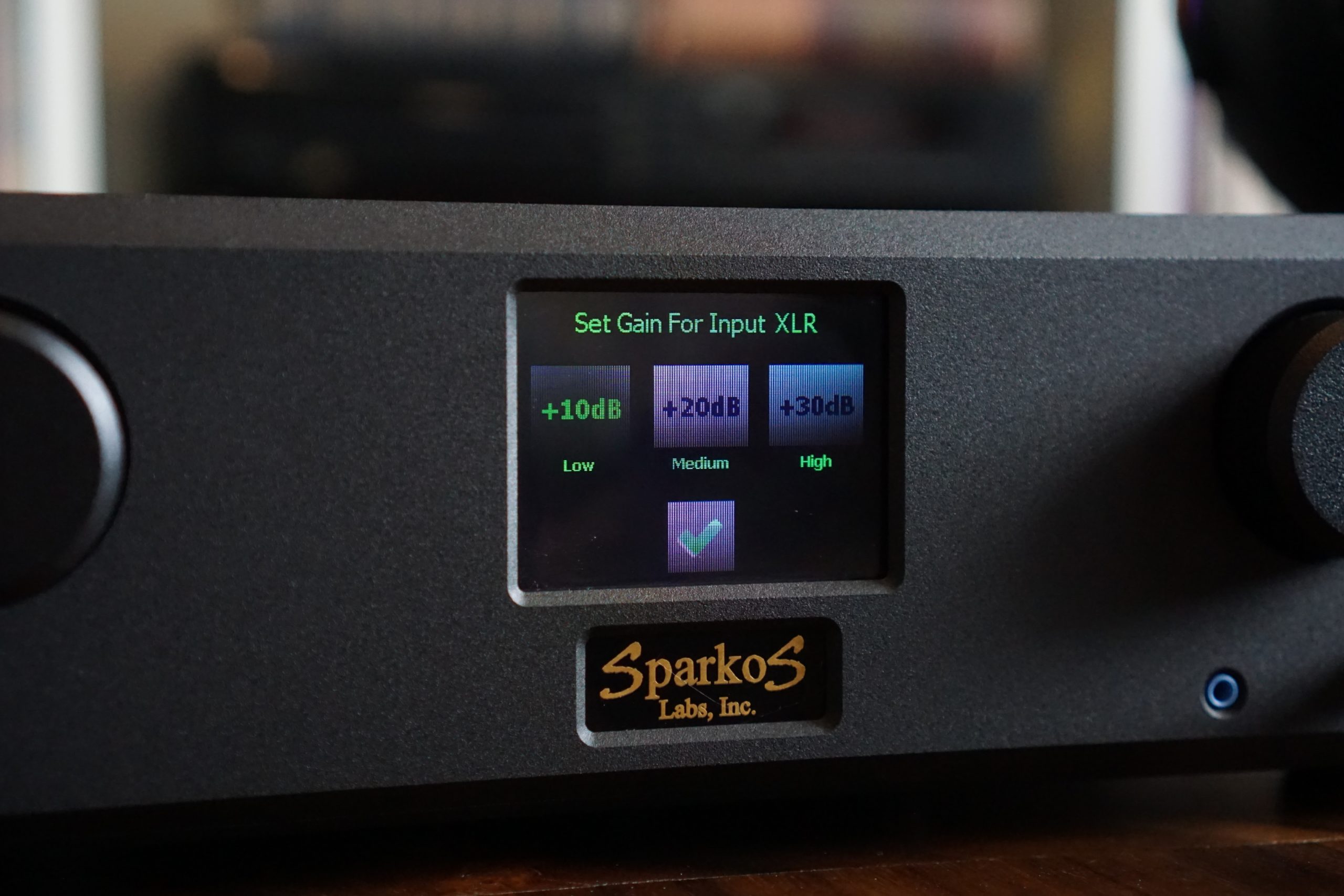
Background behind the ‘Aries’
Andrew explained to me that after six years in the component game, they were itching to make a finished desktop product to house their components inside as the ultimate expression of their engineering capabilities. The SparkoS team were keen to deliver more than simply their Op Amps + Regulators inside a box, and so decided to “go over the top…” in their words, and thus the ‘Aries’ headphone amplifier and preamplifier was born.
The Aries isn’t a DAC, nor is it a streamer, and it doesn’t even have a remote control. It’s a headphone amplifier/preamplifier in its purest form, and it’s not a cheap proposition at that. I kind of get ‘mad scientist’ vibes from Andrew (in a good kinda way), and so I was super keen to hear the result of what an engineering purist’s single, focused vision would sound like in the form of a standalone headphone amplifier – built entirely without compromise.
Design
The Aries is an imposing 30cm x 30cm x 10cm all-metal affair that certainly looks like it’s been put together to perform. The front panel is fairly minimalist and dominated by two large knobs, a single 6.3mm headphone output, a 3.5mm input, and a touch-screen panel. Andrew explained that he chose a single-ended design for the Aries by choice, favouring the lower noise floor due to half the amplifier signal paths, ultimate lighter weight and cost, and the fact that the Aries has no real lack of power thanks to its internal supply.
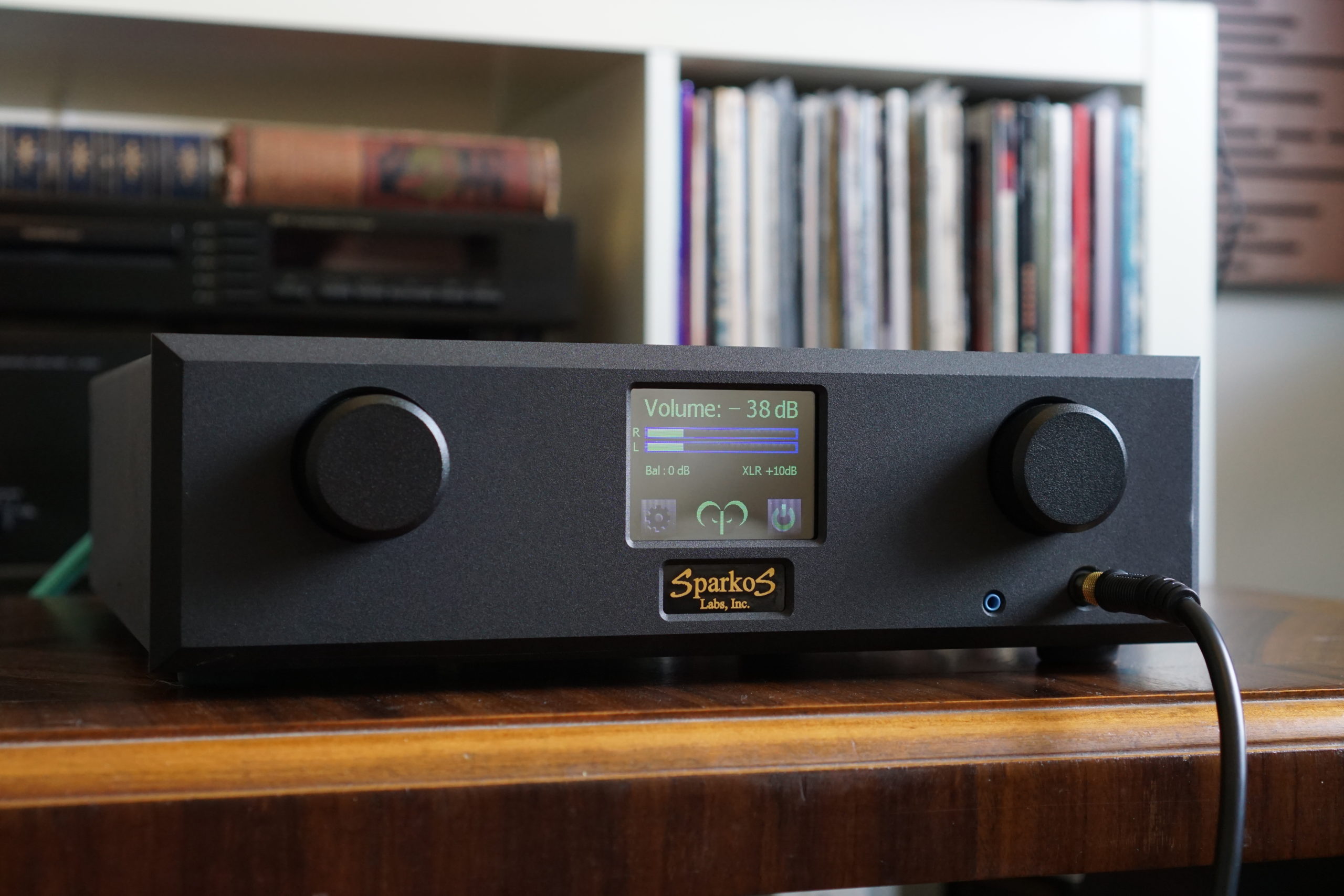
SparkoS Labs Aries
The Aries is available in two models – the $2,495 ‘base’ model has 2 x RCA line-level inputs and 1 x RCA pre-amp output, and the $2,995 ‘full’ model features an additional XLR line-level input and XLR pre-amp output. The unit for this review was the top-of-the-line model, which allowed me to connect a balanced DAC via XLR – so while the Aries is a single-ended design, it does allow for more convenient and versatile operation in preamplification duties. The Aries doesn’t require a wall-wart, with on-board power supply switchable between 110V and 230V.
Specifications
And of course, the Aries has all the benefits of superior in-house components that you’d expect. The Aries uses a fully discrete audio path using SS2590 op-amps and features SS78XX / SS79XX discrete regulators. Other key specifications are impressive, as one could expect:
- No Capacitors In The Signal Path
- DC And Overdrive Protection
- 2Hz – 350 KHz -3dB Bandwidth
- Precision 0.1% Tolerance Thin Film Resistors
- 355mA Peak, 14V Peak Output Capability
- Mu Metal Shielded Power Transformer
- < 0.1 Ohm Output Impedance
- High Damping Factor
- 16 – 300 Ohm Headphone Impedance
- All Connectors Are Gold Plated
- 1.6 uV RMS Noise at 0 db Gain 20 Hz – 20KHz Unweighted
- 9400uF Per Rail Power Supply Capacitance
So while these numbers may seem somewhat abstract or meaningless on paper, there’s one figure that’s of most interest and is perhaps the sum of the other specs: the -130 dBu noise floor.
User experience and operation continues over the jump on page 2.







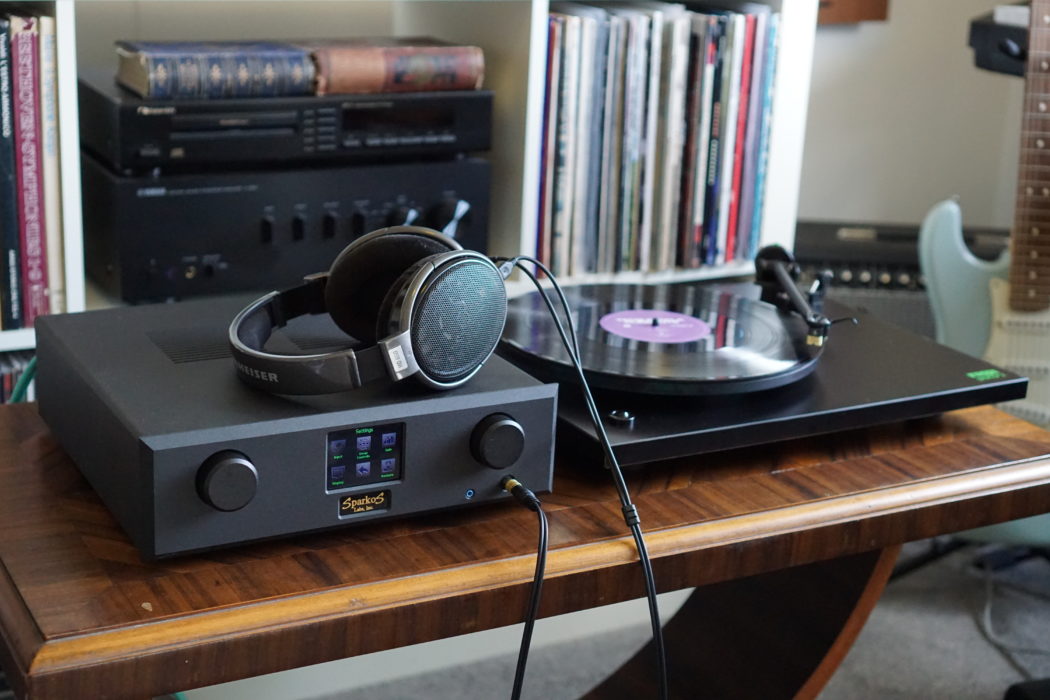
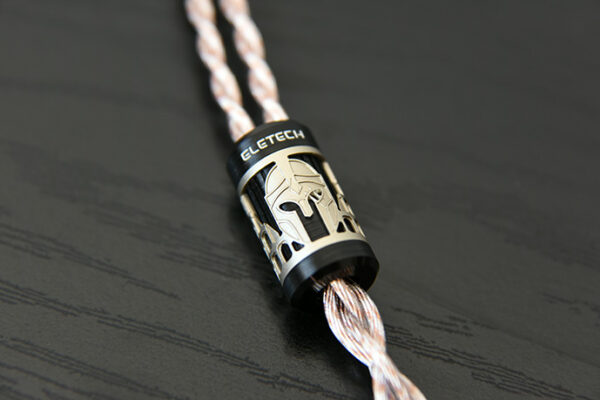
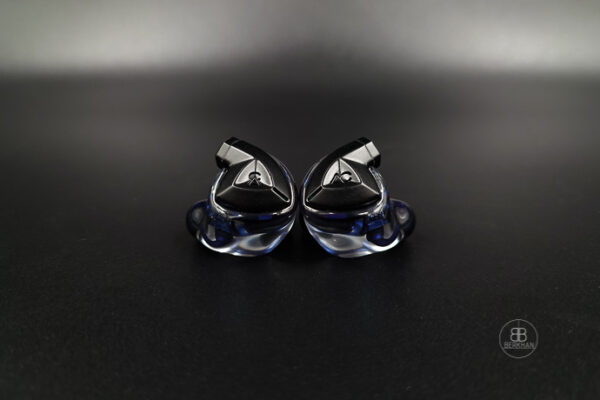
Dylan
Any reason why this isn’t on your recommend list? It would seem to fit the bill.
Cheers.